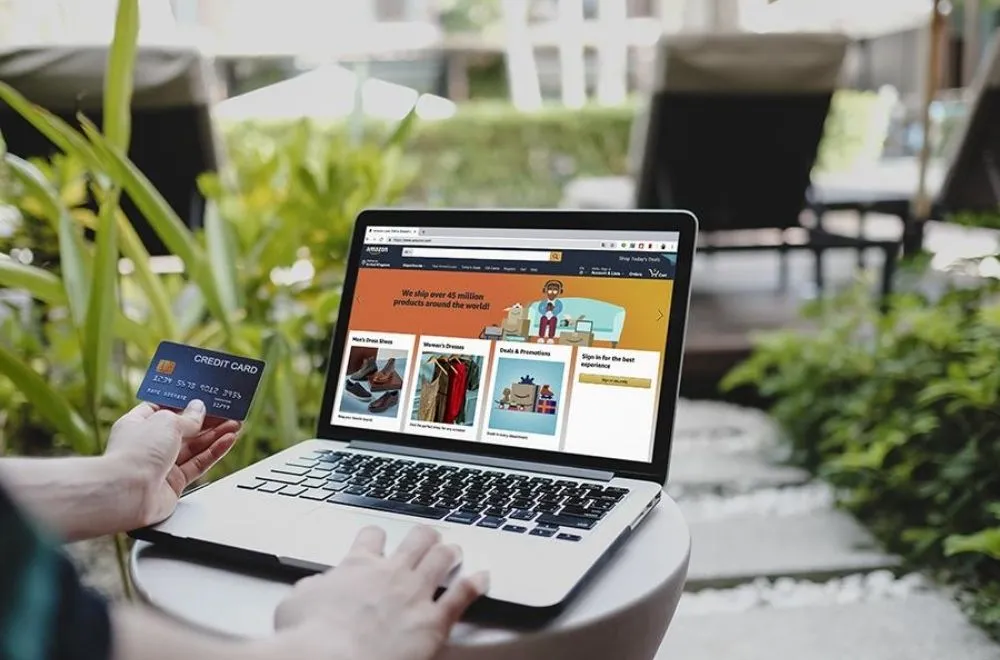The following is a guest post by Lead Horse Marketing.
A demand-side platform (DSP) is software used by advertisers to buy mobile, search, and video ads from a marketplace on which publishers list advertising inventory. Together with supply-side platforms, DSPs enable programmatic advertising which is the process of buying and selling ads with software and publishing those ads contextually based on complex algorithms.
Amazon’s Demand Side Platform Is Not Just for Brands Selling on Amazon
Amazon DSP is largely known for its capabilities to re-engage customers during their consumer journey to eventually come back and make a purchase on Amazon. While the DSP has proven to be very successful for brands on Amazon, did you know that brands that are not currently selling on Amazon can also take advantage of Amazon DSP?
Brands in different verticals can leverage the power of Amazon’s first-party data and reach to bring new life to their marketing strategy. For example, let’s say that you are a travel agency that is wanting to increase awareness of services offered. You would be able to target customers that have recently shown interest in travel or have purchased travel-related items like travel pillows, passport covers, and the like within the DSP. These customers are more likely to be engaged to take action on the advertisement to learn more about your business, and will be added into your retargeting cookie pool for bottom-funnel marketing strategies.
Non-Endemic Brands And Services Can Take Advantage of Amazon DSP
In addition to eCommerce brands, services and brands not selling on Amazon can use Amazon’s DSP. Below we have outlined examples of non-endemic DSP verticals that are a great fit to take advantage of Amazon DSP.
Automotive: In the US alone, the automotive industry is worth $80 billion. While you cannot purchase your new or used car on Amazon, you can take advantage of the DSP to help bring awareness to customers in your area that are showing interest in buying a new car or automobiles in general.
Sports: This is a wide-ranging category! Maybe you are a sports team that is wanting to target your fans or a new cycling studio hoping to let people know that you are open for business. Amazon DSP would give you the tools to reach these customers and drive them to your own website. In one of the examples above, perhaps you are the head of marketing for a popular football team. You could create an exclusion list of current season ticket holders and target customers who are shopping in Amazon’s Fan Shop.

With COVID-19 restrictions easing up, fitness studios are re-opening their doors to the public. One of the best ways to target customers with Amazon DSP is by targeting anyone that has shown an interest in workout supplements, workout equipment, yoga mats, etc. In this instance, we could also fold in demographic targeting to be less broad and only focus on customers that are in the zip codes surrounding your business. Below is an example of an in-market Amazon audience, IM-Sports & Fitness Apps, that has an estimated daily reach of 3.5 – 4 million. One strategy would be to target this audience, adding in demographic targeting to your fitness studio and negatively targeting anyone that was currently a member.

Employment Marketplaces: Employment marketplaces can be your one stop shop for finding your next career. How can large recruitment companies keep filling their pipeline? We would recommend that an employment marketplace create an exclusion audience from their CRM list and target customers on Amazon that are in-market for job hunting books or interested in job hunting and careers. The estimated daily impressions for this audience are 20M-25M — that is a lot of exposure!

Targeting customers who are actively looking for work can be tricky. Imagine sharing your screen on a video conference and you are retargeted for an advertisement that says “Still looking for your dream job?” Yikes! Amazon has restrictions and guidelines in place for ad copy requirements and restricted verticals that can be advertised within their DSP.
However, some non-endemic brands and services are not a good fit for Amazon DSP.
Amazon offers a wide range of verticals that are allowed to sell on Amazon DSP. However, they maintain their own exclusion list of restricted categories that would not be a good fit for Amazon DSP. These verticals include:
- Accidents & disasters
- Alcohol
- Excessive profanity and obscenities
- Extreme violence
- Hate Speech
- Illegal content
- Illicit and recreational drugs
- Online gambling
- Sale of firearms and ammunition
- Tobacco
- Sexually explicit content
- Terrorism
Full-Funnel Campaign Strategy
Understand KPIs at each stage of the funnel
Setting expectations and understanding KPIs for different strategies within Amazon DSP is going to be critical to the success of your programmatic strategy. Most brands have shared goals of customer acquisition, increased ROI, and retention.
For customer acquisition, we are looking for impressions and clicks to our website (or landing page) in order to bring engaged customers down the funnel to learn more about our brand. At this point, we are not concerned with ROAS, as we are optimizing towards increased impression share. Once we increase our cookie pool from our customer acquisition strategy, we can begin retargeting strategies to bring back those customers to convert. This will increase ROAS from the new pool of customers that we are driving to your website.
At Lead Horse, we have seen a direct correlation between implementation of Amazon’s DSP as a part of your brand’s holistic marketing strategy and improved ROI. A key factor in understanding programmatic KPIs is also understanding how the DSP impacts Google, Bing, and social.
Take advantage of Amazon’s “Events” tag
Amazon’s “Events” tag allows you to capture events and attributes using only one tag. Once you create the tag and place it on your website, we can create similar audiences for retargeting or exclusion based on strategies that we are running for your brand within the DSP.
Prior to this tag being created, there was a need for multiple event pixels to be placed across your website in order to capture events taken on the website.
Be sure to correctly build your exclusion audiences for precise targeting
Exclusion audiences are key when audience modeling for your DSP strategy. We recommend slicing your CRM list to give different time frames of purchasers, newsletter signups, email subscribers, etc. Perhaps you are a brand that sells kitchen and houseware products and offers a subscription service. We could create a CRM based audience that is targeting anyone that has made two or more purchases in the last 60 days but does not have a subscription membership.
Rich Customer Data for Better Advertising
Many brands are not open to selling on Amazon’s marketplace for different reasons, which is totally fine! You can also take advantage of Amazon DSP and customer data with a couple of caveats.

Example 1: If you are a seller that sells cast iron skillets, but do not want to sell your product on Amazon, you would be able to advertise with Amazon DSP without appearing on Amazon’s owned and operated inventory like Amazon.com or the Amazon app. Your brand would still be able to use Amazon’s audiences and other third-party exchanges. This is very common.
Example 2: You change your mind down the line and realize that you should be selling your cast iron skillets on Amazon.com, but you still want to drive more traffic through Amazon’s DSP to your own D2C.
Do: Retarget customers who have viewed your Amazon Product Detail Page and not purchased to return to your Amazon page and complete the purchase.
Do: Retarget any customer that fired off of the Amazon pixel on your website, but did not convert to return and purchase on your website.
Don’t: Retarget Amazon detail page viewers to leave Amazon and buy from your own website. Amazon would not allow this type of targeting strategy.
Wide Variety of Amazon DSP Ad Types
There are different advertising types that can be leveraged on Amazon DSP.
Static Images: Image ads that are shown both on and off of Amazon on desktop and mobile
Video Images: Video images that can be shown both on and off Amazon on desktop and mobile. NOTE: We have found that video creatives perform better than static images, especially for retargeting strategies.
Amazon OTT: OTT (“over-the-top”) consists of commercial advertisements that can run through Amazon FireTV and Amazon Fire Stick. Amazon OTT is a great way to gain brand awareness and increase household penetration by showing your advertisement in prime placement before or after in-app streaming services. Amazon has recently launched OTT retargeting which gives brands the opportunity to target customers that have viewed the OTT advertisement and not taken action on your website.
FireTV Sponsored Tiles: If your brand has a downloadable app on the FireTV or Fire Stick, you can run sponsored tile advertising where you will appear in the sponsored app download section of the FireTV/Fire Stick home screen. These placements are CPC based, not CPM like other DSP ad types. They offer similar targeting capabilities to consumers that are more likely to download the app based on pixel behavior on your website, especially when paired with Amazon audiences.

About the Author
Lead Horse Marketing is a full-service advertising agency that is focused on putting innovation back in eCommerce. We combine data-driven strategy with the power of world class technology to turn your brand from emerging to winning. At Lead Horse, we have earned our reputation by taking a holistic view of your marketing strategy and placing your ad dollars where they make sense to truly grow your business. We are one of the first agencies to leverage Amazon’s DSP to grow brands and services that are both on and off on Amazon’s Marketplace.
Download Pacvue’s Amazon DSP Guide to learn more.













